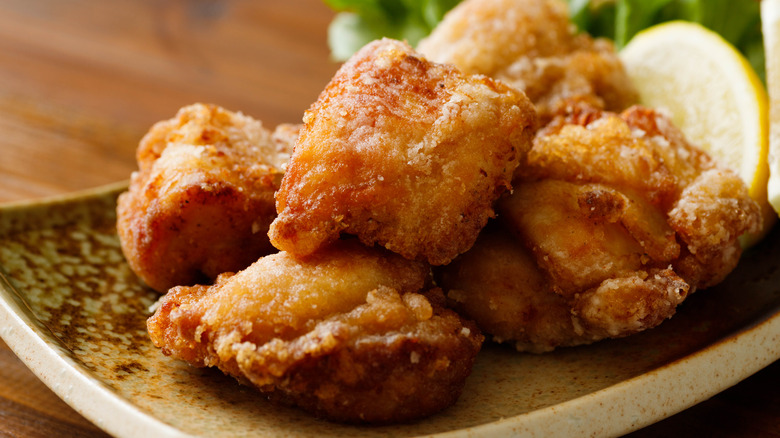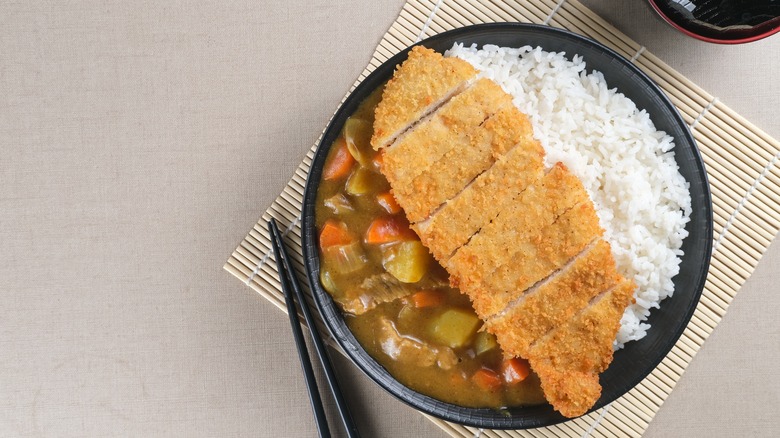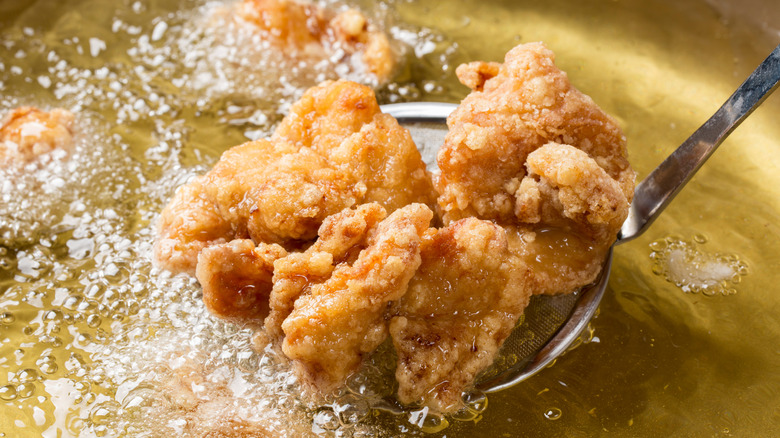Chicken Katsu Vs. Karaage: What's The Difference?
In America, fried chicken is practically a religious experience. As the BBC points out, it's even commonly called a "gospel bird" because of its consistent presence at church events and Sunday meals in the Southern half of the country. We've got the credentials to back it up, too, with outstanding fried chicken dishes throughout the country. But the road to poultry heaven is paved with good inventions from across the globe.
There are plenty of other great ways to fry up this particular bird. In Japan, people found their own ways to do so, but some of the different varieties might be a little confusing because of how similar they seem. Two of the most famous examples are chicken katsu and karaage. As Just One Cookbook points out, both are made with deep-fried chicken (though both can use other ingredients as well), and both are exquisitely rich. But they also have elements that set them apart from each other.
Different approaches to chicken
One major difference between these two dishes has to do with the way the meat is prepared. They often make use of different parts of the bird. This is more than simply a "drums vs. flats” argument that people have when discussing the best part of a chicken wing (via Syracuse.com).
According to The New York Times, chicken katsu is most often made with boneless, skinless chicken breasts. Meanwhile, Just One Cookbook says that karaage is traditionally made with skin-on thighs. These two different cuts of meat will have nutritional differences because the chicken breasts are considered white meat, while the thighs are dark meat. Insider says that dark meat not only has a more succulent flavor thanks to its higher fat content, but it's less likely to dry out while being cooked as well. This means you'll likely get a juicier cut of meat coming out of the fryer.
The other major difference in the way the meat is prepared for these two dishes is that the chicken breast for katsu will be tenderized, per The New York Times. MasterClass says that tenderizing is a process that evens out the texture of the meat. This makes it more tender and helps it to cook more evenly as well. Fat Noodle Ramen House says that karaage is not usually tenderized, but is often marinated before being fried. It is also cut into smaller bite-sized pieces while katsu is fried as a whole filet.
Different frying techniques
The differences in cuts of meat and the way they are prepared will affect the dishes' flavor and texture, but so will the way they are fried. The New York Times says that before chicken katsu is fried, it is first coated in a layer of panko bread crumbs. Healthline points out that regular breadcrumbs produce a crust that isn't as crispy or light as panko crumbs, which also tend to absorb less oil.
Karaage, however, is fried with the karaage technique. Fat Noodle Ramen House says this style of deep-frying was developed around the 1600s, along with the similar tempura style, and can be used with many different ingredients. One of the key differences of this technique is that it uses potato starch as the dry material which coats the chicken and produces its crust.
According to Martha Stewart, potato starch is often used in frying to provide a wonderfully crispy exterior. Where potato flour uses the entire potato, the starch is made by only extracting the starches from the spud. This gives chicken karaage its own distinct texture, which stands out when compared to the lighter panko coating of chicken katsu.


